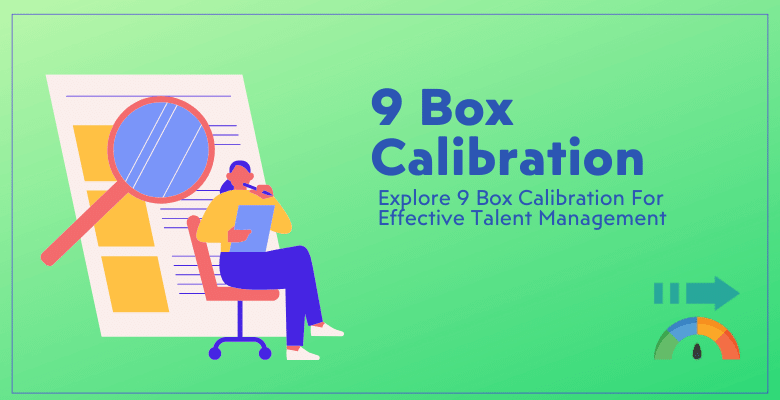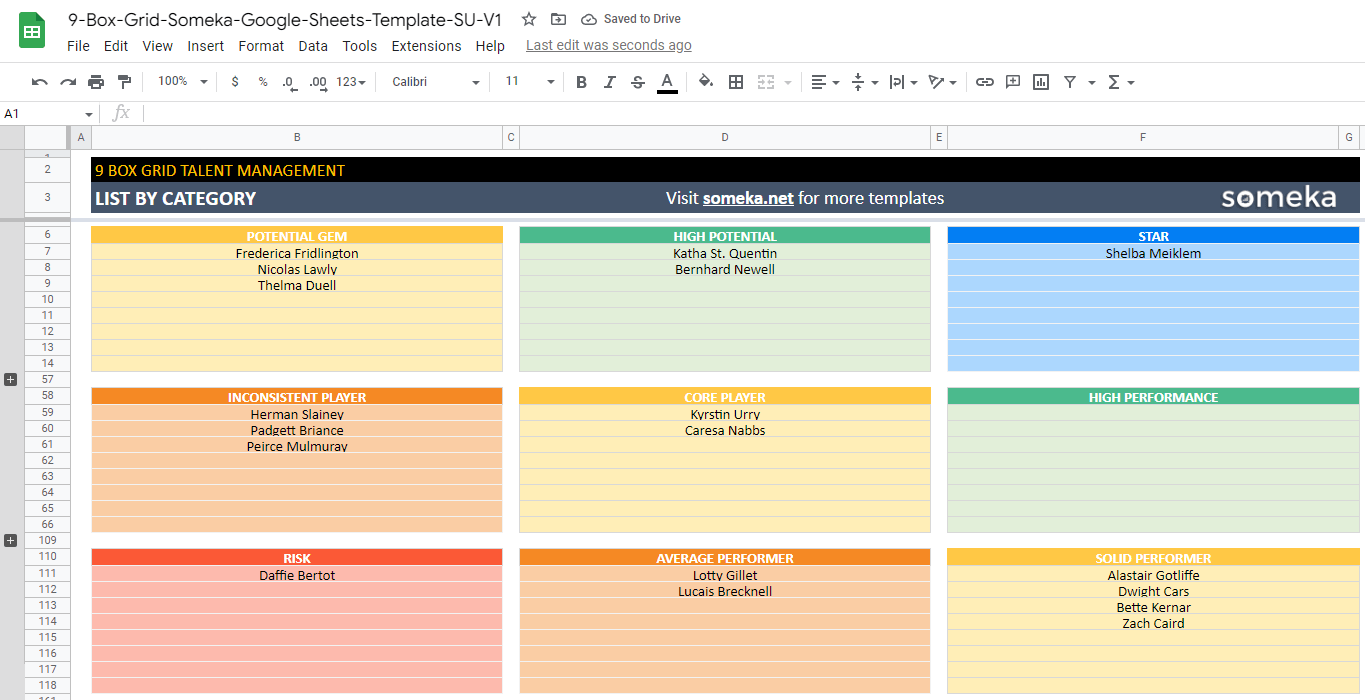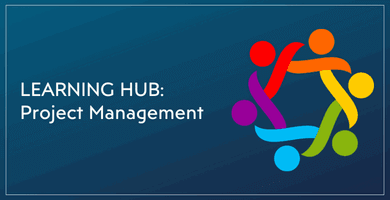
9 Box Calibration: How to conduct calibration review with 9 Box Model?
In the past few years, the idea of talent management has changed a lot, and companies are relying more and more on data-driven methods to make important choices about their employees. One method that has become popular is the 9-Box Talent Review. It is a very useful way to evaluate and help employees grow. One important step in this process is called calibration, and it is a key part of making sure that ratings are fair and unbiased.
Table Of Content
1. What Does Calibration Mean in HR?
2. What is Performance Calibration?
3. What is Talent Calibration?
4. Nine Box Talent Calibration
5. The Importance of Calibration: How to Make Objective Assessments
6. Performance Calibration vs. Talent Calibration
7. Talent Calibration and Objectivity
8. Pros and Cons for 9 Box Calibration
9. In Conclusion
10. FAQ’s
1. What Does Calibration Mean in HR?
As a dictionary meaning, the calibration is defined as the units of measurement marked on an instrument or the process of checking a measuring instrument to see if it is accurate.
When it comes to human resources and talent management, calibration is the methodical process of making sure that all of an organization’s performance reviews and talent reviews are fair, uniform, and unbiased. It means getting key stakeholders, like managers and HR professionals, together to talk about and agree on how they see employees’ success and potential.

2. What is Performance Calibration?
Performance calibration is all about judging how well a person does their job. It means comparing and standardizing performance reviews and feedback so that they are objective and all workers are evaluated in the same way. During performance calibration meetings, managers talk about and change how they evaluate employees so that they are more in line with set criteria. This makes the evaluations more fair and accurate of each employee’s contributions.
 10. What Are 9 Box Alternatives?
10. What Are 9 Box Alternatives?
3. What is Talent Calibration?
Talent calibration, on the other hand, looks at more than just performance. It also looks at how an employee can grow and improve within the company. It looks at things like the person’s ability to lead, their ability to adapt, and their readiness for bigger jobs. The goal of talent calibration sessions is to find and develop high-potential workers while also addressing skill gaps and development needs in a consistent way.
4. Nine Box Talent Calibration
In the context of the 9-Box Talent Review, the word “9 Box Talent Calibration” combines the ideas of performance and talent calibration. Basically, it’s the process of carefully rating and aligning employees’ performance and possible ratings on a 3×3 grid, which gives a full picture of the workforce. The nine boxes show different combinations of success and potential. This helps companies find the best employees, the leaders of tomorrow, and places where they can improve.
In the next part, we’ll talk about how 9 Box Calibration can be used in real life and how to do it correctly.
4.1. 9 Box Application
The 9 Box Calibration is a flexible tool that can be used in many ways in human resources and talent management. An organization can gain a lot from learning how to use the 9-Box grid correctly.
The 9 Box Calibration is used in the following important ways:
Finding Employees with a Lot of Potential
One of the main uses of the 9 Box Calibration is to find employees with a lot of promise. People in this group usually belong to the upper right corner of the grid and are called “Stars.” By focusing on workers who are both high performers and high potential, companies can help them grow into future leaders.
Planning for Succession
A big part of talent management is succession planning, and the 9 Box Calibration is a key part of this process. It helps companies figure out which workers are most likely to become stars in the future. Finding possible replacements ahead of time makes sure that the change goes smoothly when important jobs open up.
Customized plans for growth
Once workers are put into groups using the 9-Box grid, companies can make development plans that are specific to each group. These plans might include leadership training and mentorship programs for workers with a lot of potential. Targeted skill development programs can be put in place for people who need to get better.
Performance Reviews That Are Objective
The 9 Box Calibration encourages managers to align their evaluations, which leads to more fair performance reviews. This cuts down on bias and makes sure that employees are judged fairly based on clear criteria. Calibration meetings help people have productive conversations, which results in more accurate ratings of performance.
Efficient Allocation of Resources
Companies can better use their resources by putting workers into groups based on their performance and potential. Employees with a lot of promise may get more training and development, while employees who aren’t doing as well may get extra help to get better.
Open communication is encouraged.
Managers and HR workers get together for calibration sessions to talk about and argue about their evaluations. This open conversation encourages people to work together and share their different points of view, which eventually leads to more accurate assessments.
Within the next part, we’ll talk about the specific steps needed to carry out a 9 Box Calibration and how it can be easily integrated into a company’s talent management plan.
4.2. How to Do Calibration for Nine Boxes?
A good 9 Box Calibration session needs to be carefully planned and carried out. Here are the most important steps to make sure the tuning process works:
#Step1: Get ready ahead of time: Get all the important information together before the calibration process. This could include job reviews, feedback from employees, and possible assessments.
#Step2: Define the criteria for evaluation: Set up criteria that are clear and consistent for judging both success and potential.
#Step3: Find the participants: Pick the people who will be in the calibration event.
#Step4: Look over each person’s assessment: During the calibration session, each person gives an overview of how they see employees. They talk about why they gave the ratings they did and give proof to back it up.
#Step5. Discussions with Others: Encourage people to talk to each other in an open and cooperative way.
#Step6: Use the 9-Box Grid to plot: After talking about it, put each employee on the 9-box grid based on their success and possible evaluations.
– This plot is created by Someka’s 9 Box Template in Excel –
#Step7: Document What Happened: Write down what happened at the calibration session, such as where workers were placed on the 9-box grid and any agreed-upon plans for their development.
#Step8: Actions to Take Next: Carry out the actions and growth plans that were agreed upon during the calibration session. Keep an eye on workers’ progress and be there for them as they work to reach their goals.
#Step9: Getting Calibrated Often: Not a one-time thing, but a process. Set up regular calibration meetings, like once a quarter or once a year, to make sure that assessments stay consistent and in line with the goals of the organization.
5. The Importance of Calibration: How to Make Objective Assessments
It’s impossible to say enough about how important calibration is in talent management. Here’s why calibration is so important for making sure that groups can do fair assessments:
- Getting Rid of Bias: Bias in performance reviews can cause reviews to be wrong and unfair.
- Teams Should Be Consistent: In big companies, different teams or groups may have different standards for how well people do their jobs and how they should be evaluated. These standards are brought into line by calibration.
- Decisions Based on Data: Assessments in calibration sessions are based on facts and proof. This method is based on data, which makes performance and potential evaluations more reliable.
- Development of Employees: Calibration makes development plans for workers more personalized and useful.
- Planning for Succession: A key part of succession planning is calibration. Finding employees with a lot of potential and making sure their growth fits with the company’s goals will help things go smoothly when key roles open up.
- Better performance by the organization: An honest evaluation of workers makes them more likely to be engaged and motivated. Calibration encourages an open and fair work environment, which can improve the overall performance of a company.
- Keeping good workers: To keep good employees, you also need fair evaluations and clear plans for their growth.
– This is an example of an 9 Box Grid created by Someka’s 9 Box Google Sheets Template –
6. Performance Calibration vs. Talent Calibration
There are two different but related methods of calibration in the field of talent management: performance calibration and talent calibration. Let’s look at how they work together and why businesses should think about both:
6.1. How do performance and talent calibration fit together?
Performance Calibration: This method is used to rate how well an employee does their job. To get rid of subjectivity, it includes comparing and standardizing ratings of performance.
Talent Calibration: Looks at more than just success and how an employee can grow within the company. It looks at things like the person’s ability to lead, their ability to adapt, and their readiness for bigger jobs.
Calibration for performance looks at the “what” (an employee’s present work), while calibration for talent looks at the “what’s next” (an employee’s possible future contributions).
The two processes work hand-in-hand. Performance calibration is the first step in making sure that an employee’s current efforts are valued fairly. The next step in talent calibration is to find people who have the ability to do well in leadership positions in the future.
6.2. Why should companies make performance and talent calibration?
We’ll sum up the reasons to conduct performance and talent calibration in five main goals:
- Holistic Employee Development: Companies use a holistic approach to employee development when they put performance and skill calibration at the top of their list of priorities.
- Effective Succession Planning: Talent assessment is a key part of effective leadership succession planning. Talent calibration helps companies find employees with a lot of promise.
- Fair and Objective Evaluations: Performance and skill calibration are both parts of fair and objective evaluations. Performance calibration gets rid of bias. And the talent calibration makes sure that everyone’s ability is seen and developed without any favoritism.
- Motivated and interested: Workers are more motivated and interested when they believe their work is being fairly evaluated and their abilities are being recognized. This leads to happier employees who stay with the company longer.
- Better organizational agility: A workforce that has accurate assessments of ability and performance is better able to adapt to changing business needs. Companies can quickly find and train workers who are ready to take on new tasks and lead others.

7. Talent Calibration and Objectivity
Talent calibration isn’t just a way to find workers with a lot of potential; it’s also a powerful way to make sure that assessments are fair. This is how talent assessment helps organizations be more objective:
- Getting rid of bias and subjectivity
- Standardizing the criteria for evaluation
- Making decisions based on data
- Open communication is encouraged
- Getting assessments to work with the goals of the organization
- Making a Culture of Being Fair
One of the main goals of talent tuning is to make talent evaluations less biased and subjective. Talent calibration encourages companies to set standard criteria for judging success and potential. These standards come from the organization’s goals and ideals.
Data and proof are used to back up estimates in talent calibration. This method based on data makes evaluations more objective. Calibration sessions encourage people to talk and interact freely with each other.
Talent calibration makes sure that evaluations are in line with the strategic goals and priorities of the company. This makes sure that personal goals or biases don’t affect the evaluations and that the focus stays on what is best for the company.

A culture of fairness grows in a company when employees see that their evaluations can be changed and that decisions are made by the whole group. Employees are more likely to trust the evaluation process and think that the company will do fair evaluations.
8. Pros and Cons for 9 Box Calibration
There are some good things and some bad things about the 9 Box Calibration method, which shows both success and potential in a visual grid. Let’s look at the good and bad points of this way of managing talent:
Pros:
- Clarity in the Evaluation of Talent: The 9-box grid makes it easy to see how well an employee is doing and how much they can improve. This clarity makes evaluating ability easier and helps people make better decisions.
- Finding Employees with a Lot of Potential: The 9-Box grid is great at finding high-potential workers who could become leaders in the company in the future. This is very important for planning for the next boss and developing leaders.
- Customized plans for growth: Companies can make growth plans that fit the needs of each employee by putting them in different boxes on the grid. This personalized method speeds up the learning of skills.
- Discussions with goals: Because 9 Box Calibration sessions are collaborative, they push participants to have honest conversations. It helps get rid of biases and makes sure that judgments are based on facts.
- Strategic Management of Talent: Strategic goals for talent management are in line with the 9-box grid, which makes it easier for companies to use their resources wisely and help key people grow.
Cons:
- A Simple Model: The 9-Box grid is a simple model that might not show the full range of an employee’s skills and abilities. It might miss details that change how ability is judged.
- Placement Based on Subjectivity: Even though people try to be less biased, the way workers are placed on the grid can still be affected by personal opinions. Different people may have different ideas about how good an employee could be.
- Too much focus on potential: Some companies may focus too much on an employee’s future and not enough on how well they’re doing now. People with a lot of promise could be promoted even though they aren’t ready to be leaders yet.
- Not Being Specific Enough: The 9-box grid might not be very clear about what criteria are used to judge success and potential. To make sure there is consistency, organizations must clearly define these factors.
- Calibration that uses a lot of resources: Holding 9 Box Calibration events can use a lot of resources and require time and work from many people. It might be hard to apply for small groups that don’t have a lot of resources.
Finally, the 9 Box Calibration method gives you a planned and visible way to evaluate talent, which could help you find high-potential workers and improve strategic talent management. It should be used with other evaluation methods, though, to make up for its flaws and get a full picture of workers’ skills and potential.
9. In Conclusion
9 Box Calibration is a useful tool for managing talent. It shows both performance and potential ratings in a grid, which helps companies find high-potential workers, make personalized development plans, and make smart choices about talent management. It is important to remember, though, that 9 Box Calibration is only one part of managing talent.
Thanks for coming along with us as we looked into 9 Box Calibration. We hope you learned a lot from this guide. Please don’t hesitate to get in touch if you have any more questions or need help with your people management plans.
10. FAQ’s
-
What is the 9 box method?
The 9 box method, also known as the 9 box grid or 9 box model, is a talent management tool used by organizations to assess and categorize employees based on their performance and potential. It involves placing employees into one of nine boxes within a grid, with the vertical axis typically representing performance (e.g., from low to high), and the horizontal axis representing potential (e.g., from low to high).
This method helps organizations identify high-potential employees, guide talent development, and make informed decisions regarding promotions, succession planning, and resource allocation.
-
How do you complete a 9 box assessment?
Completing a 9 box assessment involves the following steps:
Gather Data: Collect relevant data on employees’ performance and potential. This data may include performance reviews, feedback, training records, and assessments.
Define Criteria: Clearly define the criteria you’ll use to assess performance and potential. These criteria should align with your organization’s goals and values.
Place Employees: Plot each employee on the 9 box grid based on their performance and potential. Typically, high performers with high potential are placed in the top-right box, while low performers with low potential are in the bottom-left box.
Calibration: Hold calibration sessions with managers and HR professionals to review and discuss employee placements. This step ensures consistency and objectivity in assessments.
Create Action Plans: Based on the results, develop action plans for employees in different boxes. These plans may include targeted training, mentoring, or career development opportunities.
Regular Updates: Regularly update the 9 box grid to reflect changes in employee performance and potential. This ensures that talent management remains dynamic and responsive to evolving needs.
-
What is the 9 box matrix method?
The 9 box matrix method, often referred to as the 9 box grid or 9 box model, is a visual framework used in talent management. It involves categorizing employees into nine boxes within a grid, with one axis representing performance and the other representing potential. This method helps organizations identify and differentiate employees based on their current performance and future potential. It is a valuable tool for making decisions related to talent development, succession planning, and resource allocation.
-
What is McKinsey 9 box talent matrix?
The McKinsey 9 box talent matrix is a variation of the traditional 9 box grid used by McKinsey & Company, a global management consulting firm. It is a talent management tool designed to assess and categorize employees based on their performance and potential. The matrix helps organizations identify and prioritize talent for various purposes, such as leadership development, succession planning, and strategic workforce planning. While it shares similarities with the standard 9 box grid, McKinsey’s version may have specific criteria and definitions tailored to the organization’s needs and objectives.
-
What’s talent calibration?
Talent calibration, also known as performance calibration or talent review calibration, is a collaborative and systematic process used by organizations to ensure fairness, consistency, and objectivity in talent assessments. During talent calibration sessions, managers, HR professionals, and other stakeholders come together to review and discuss employee performance and potential assessments. The goal is to align assessments with organizational goals, eliminate biases, and make informed talent management decisions. Calibration sessions help identify high-potential employees, plan development strategies, and support talent-related decision-making processes within the organization.
Recommended Readings:





